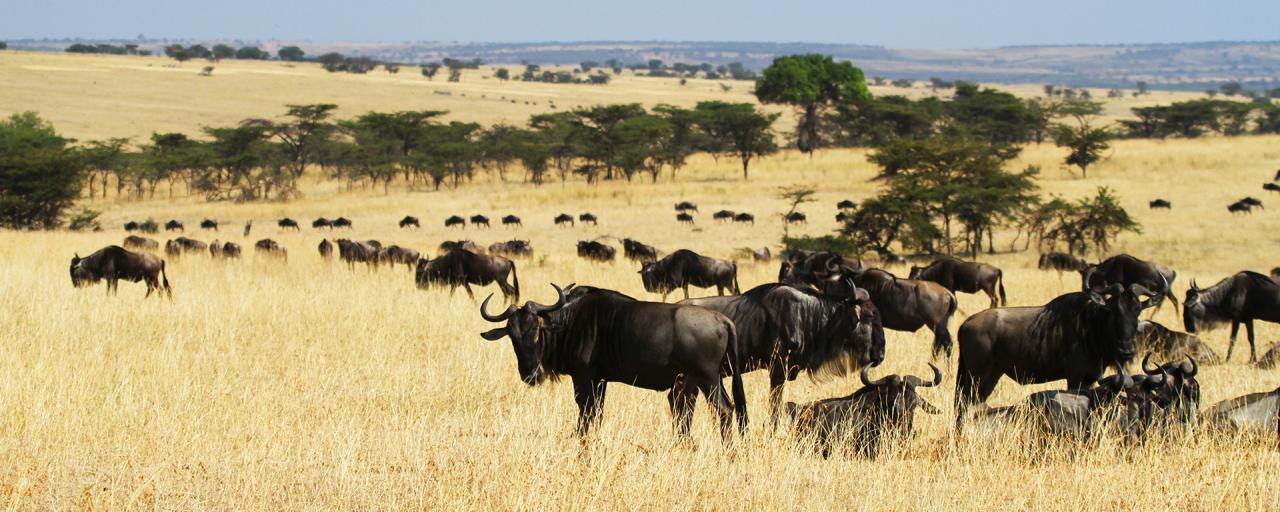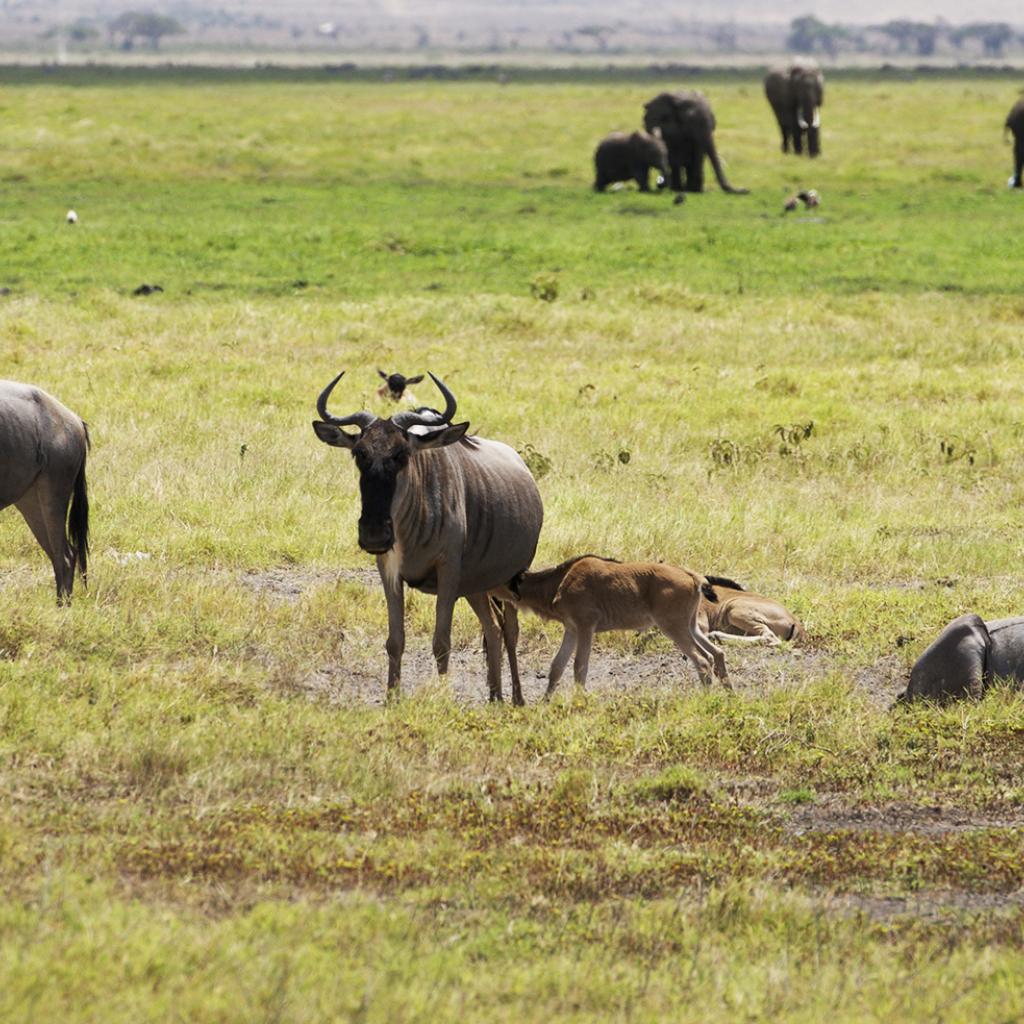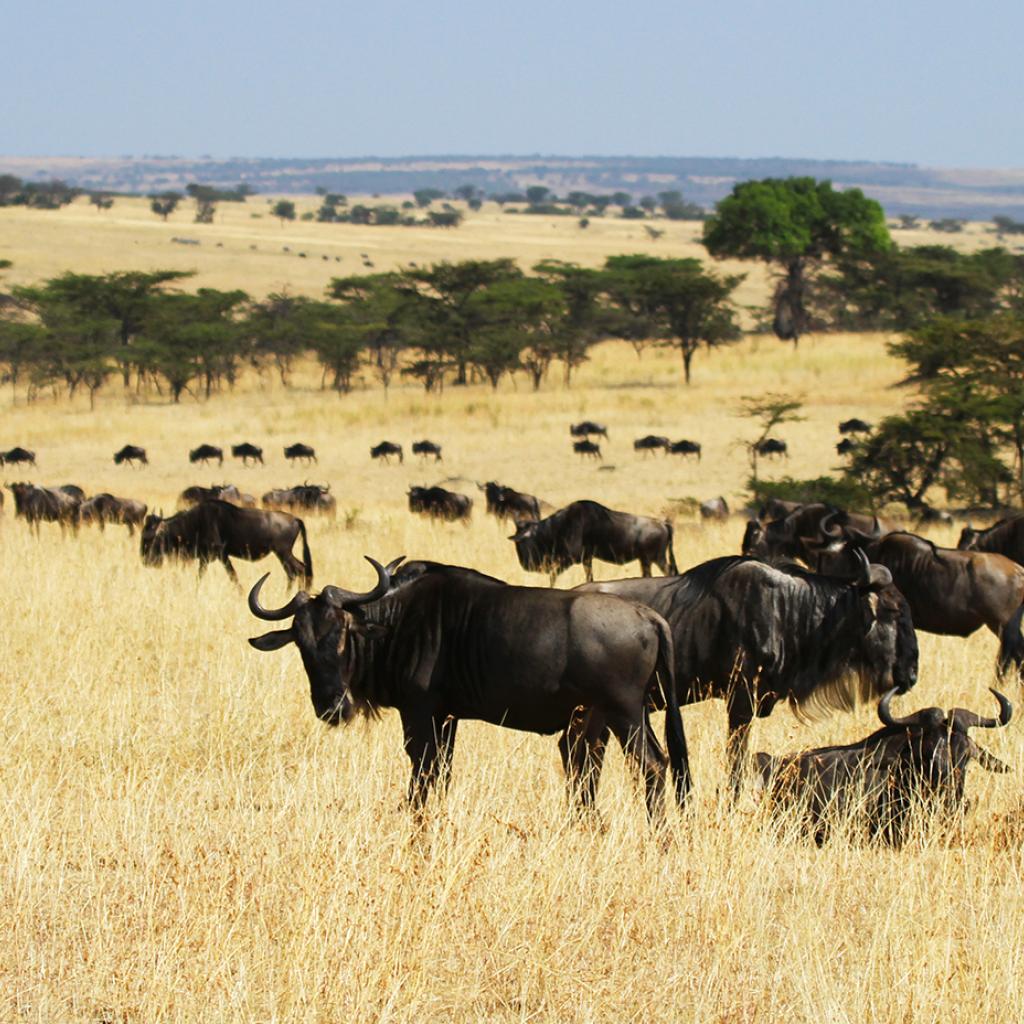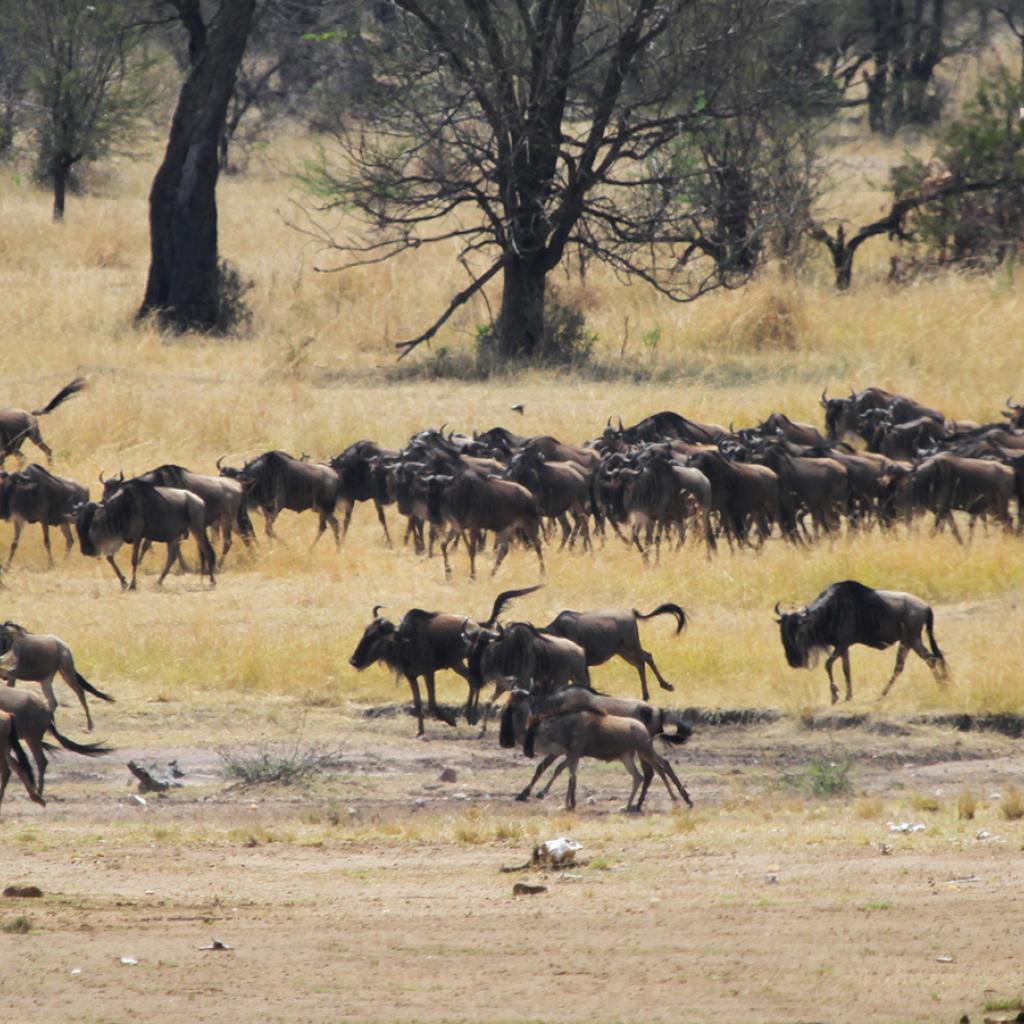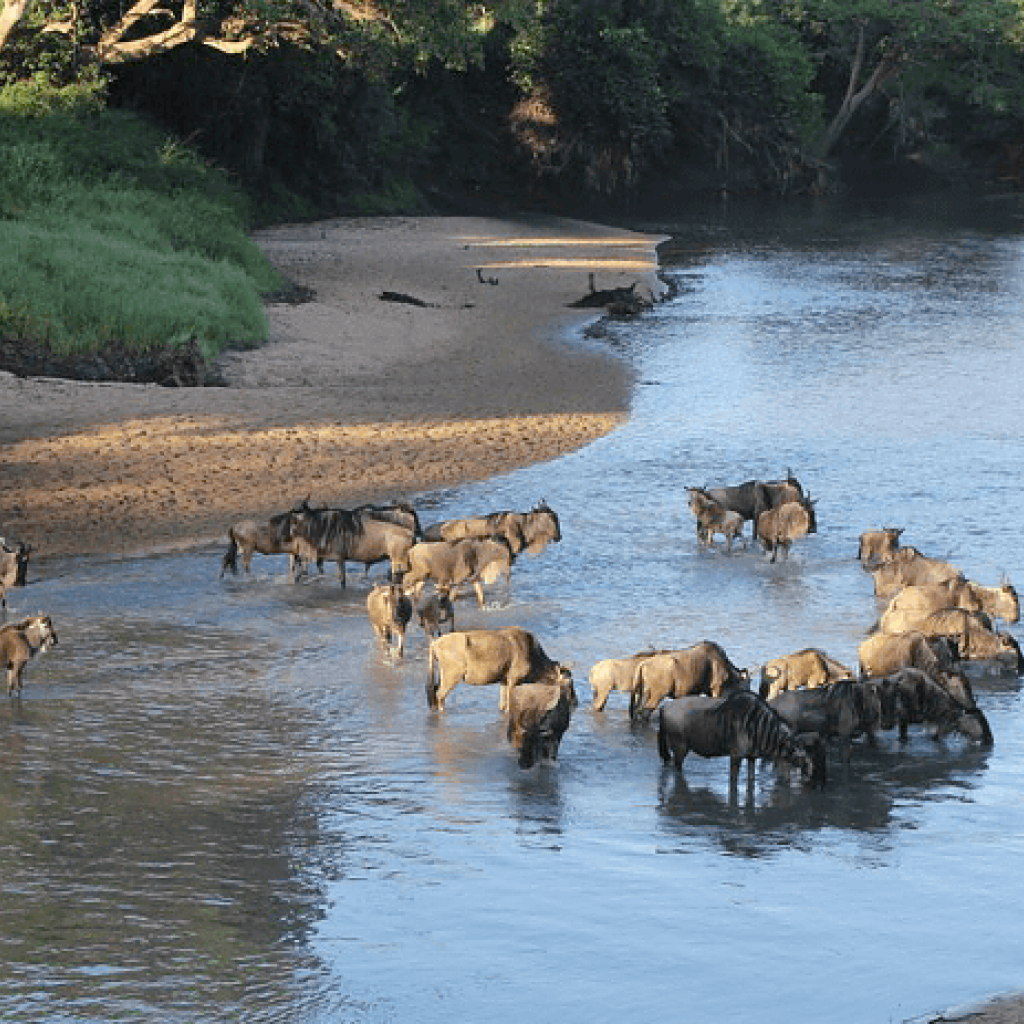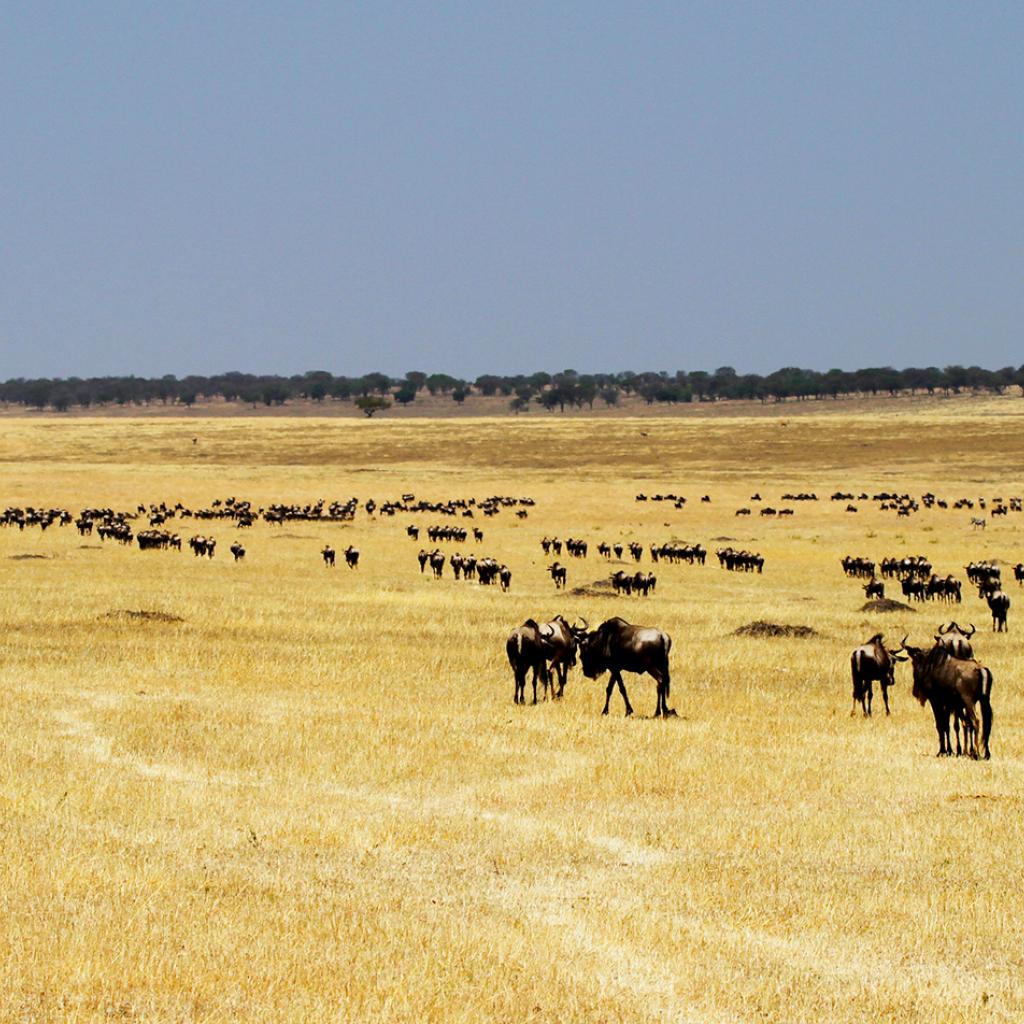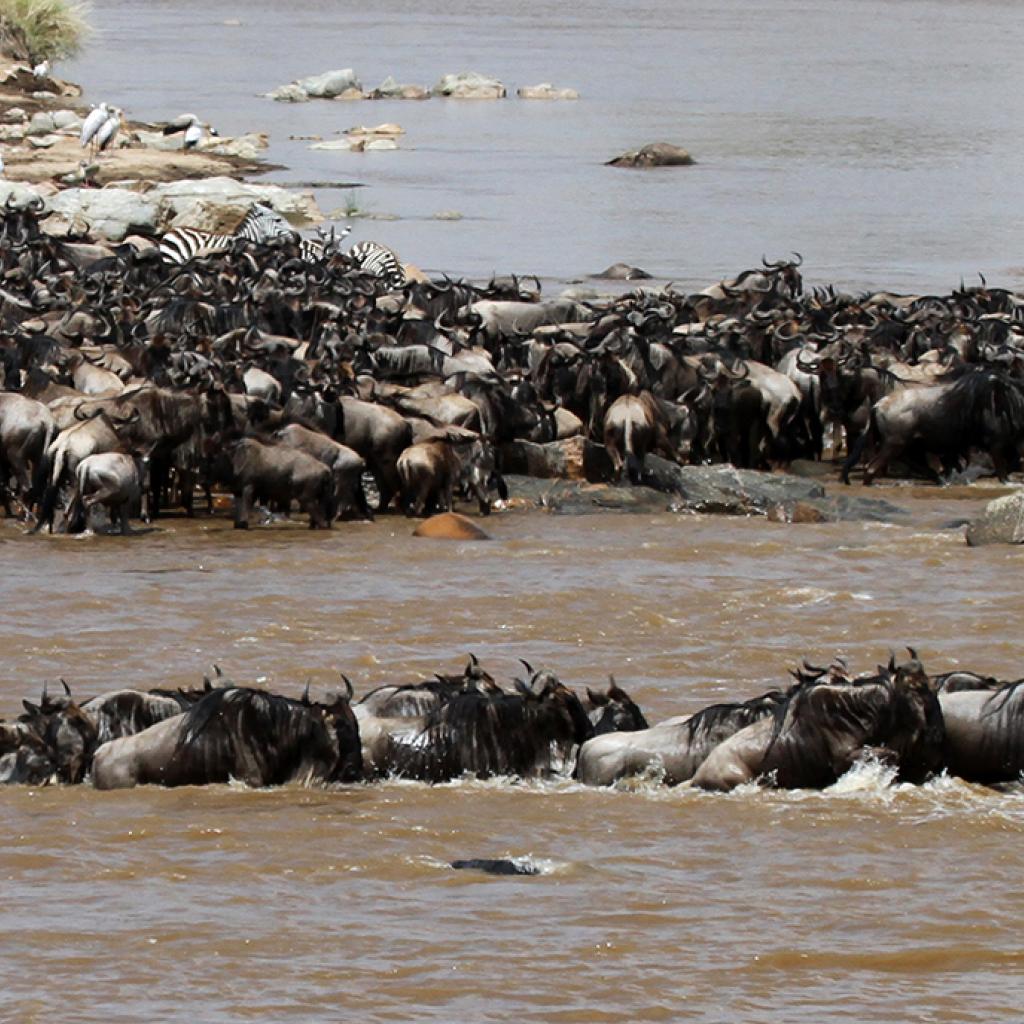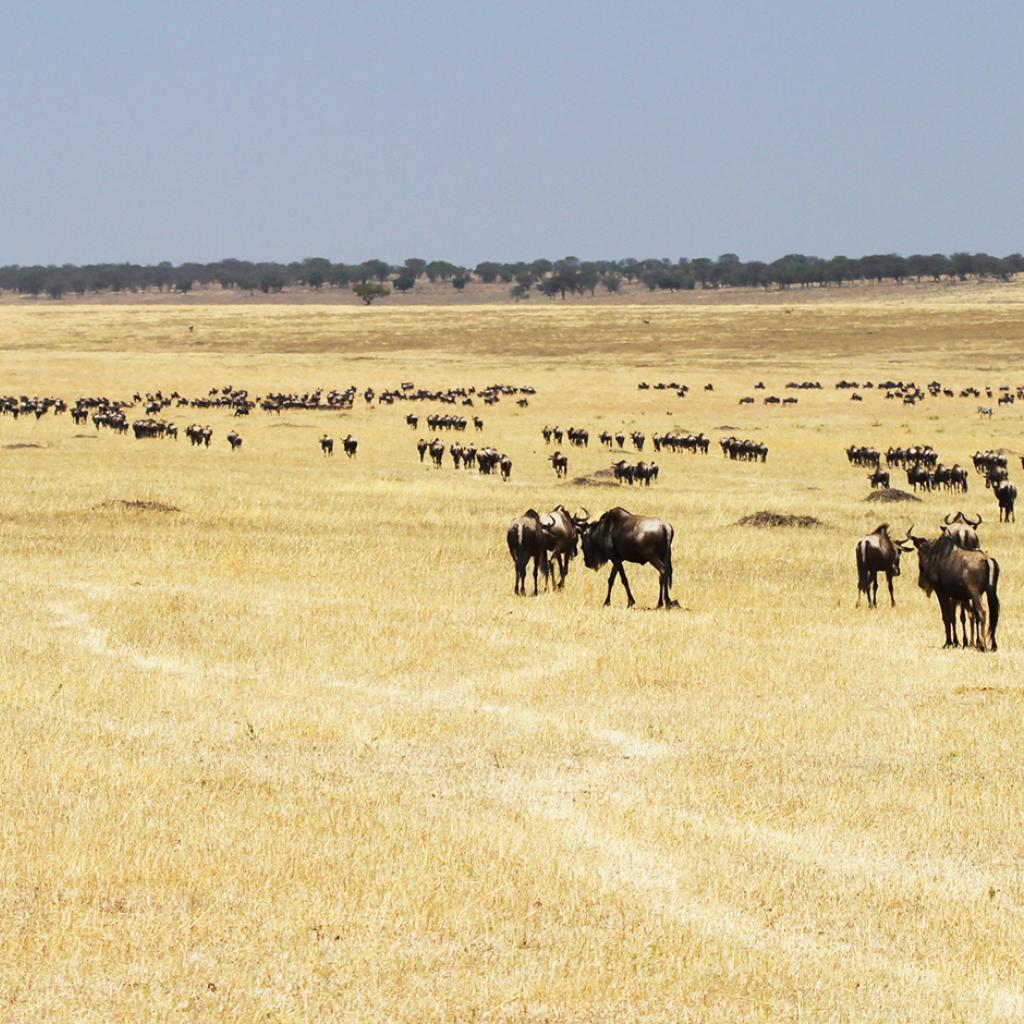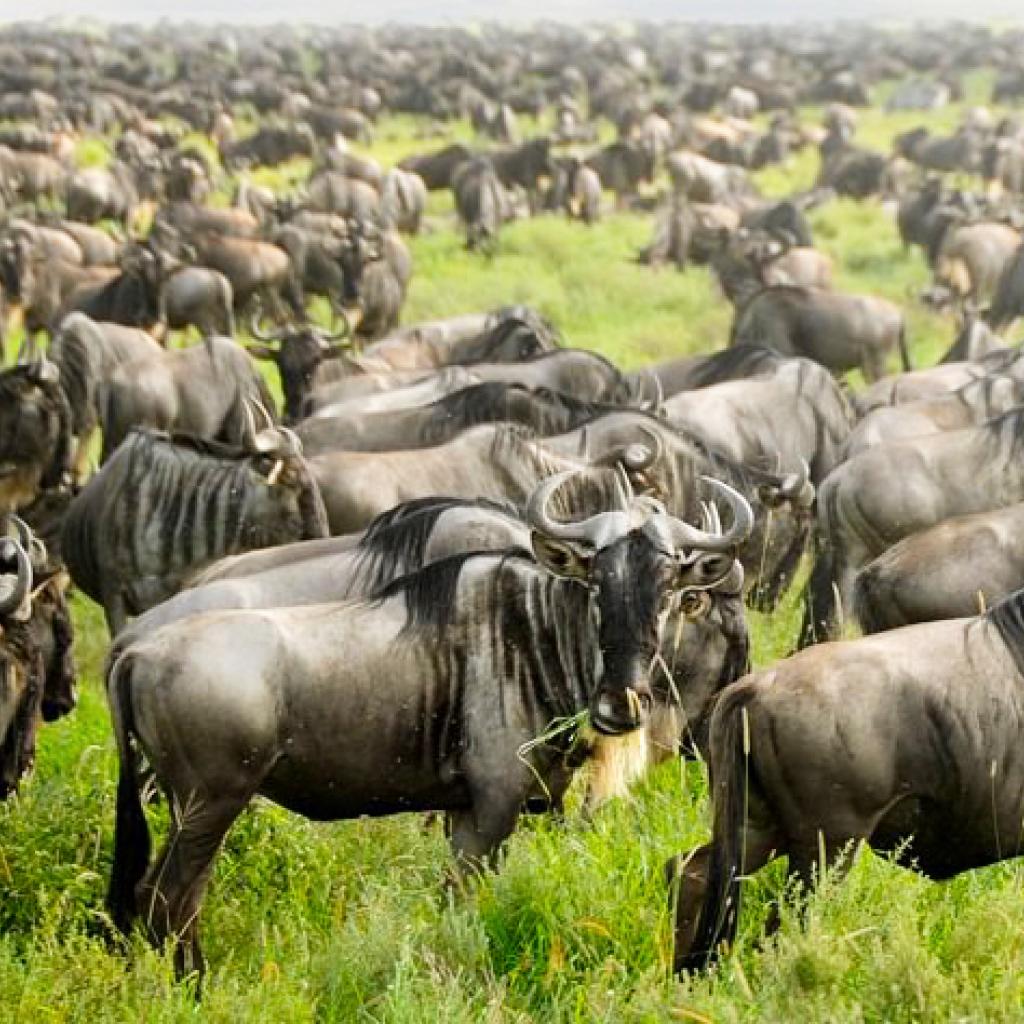In April the pups have been weaned and the dry season draws to a close. The herds begin to move North from the Ngorongoro Conservation Area and Southern Serengeti, leaving behind the fertile low-grass plains.
The savannah begins to dry out due to lack of rainfall and is no longer able to provide the nutrients necessary for the Migration after months of grazing and exploitation.
The lack of water causes the wildebeests to chase storms and seasonal downpours. These animals can perceive rain from a long distance.
The herds point North/North-West and reach the central area of the Serengeti.
They initially move chaotically and disorderly, without a clear direction, only chasing the rains. But soon wildebeests and zebras start marching and form lines as long as 40 kms.
The lakes and rivers here collect water from storms and can satisfy the thirst of the herds.
Pastures are still green but the grass is less nutritious than the plains left behind.
Where is possible to spot the herds of Great Migration in April
Moru Kopjes: This area is located in the Central-Western side of the Serengeti and links Ndutu to the river Seronera valley.
On their way to the North the herds transit here, where the lurking lions, on large rocky boulders, await the right time for hunting.
Herds of elephants, giraffes, buffaloes and various types of antelopes can be found here. Rhinos also reside here, but you need a good dose of luck to spot one.
Seronera: The river Seronera provides a reserve of water and feed to the wildebeests and zebras, as well as to elephants and other herbivorous, such as buffaloes, antelopes and gazelles.
This explains why a high concentration of predators can be found here all year round, especially lions, leopards and cheetahs, always lying waiting to catch their preys flocking here in search of water.
Ndutu, Masek and Lagarja: some herds linger here because of the water of these salt water lakes, and the surrounding areas that are still verdant.
But they stay here for a short time as they soon will start marching Northwards. Here you can spot giraffes, ostriches, impalas, various gazelles, lions, spotted hyenas, striped hyenas, jackals but also hippos and crocodiles, and many species of birds.
Discover the Great Migration map here
Discover the location of the Great Migration month by month
- January, February and March
- April
- May
- June
- July
- August, September and October
- November
- December


